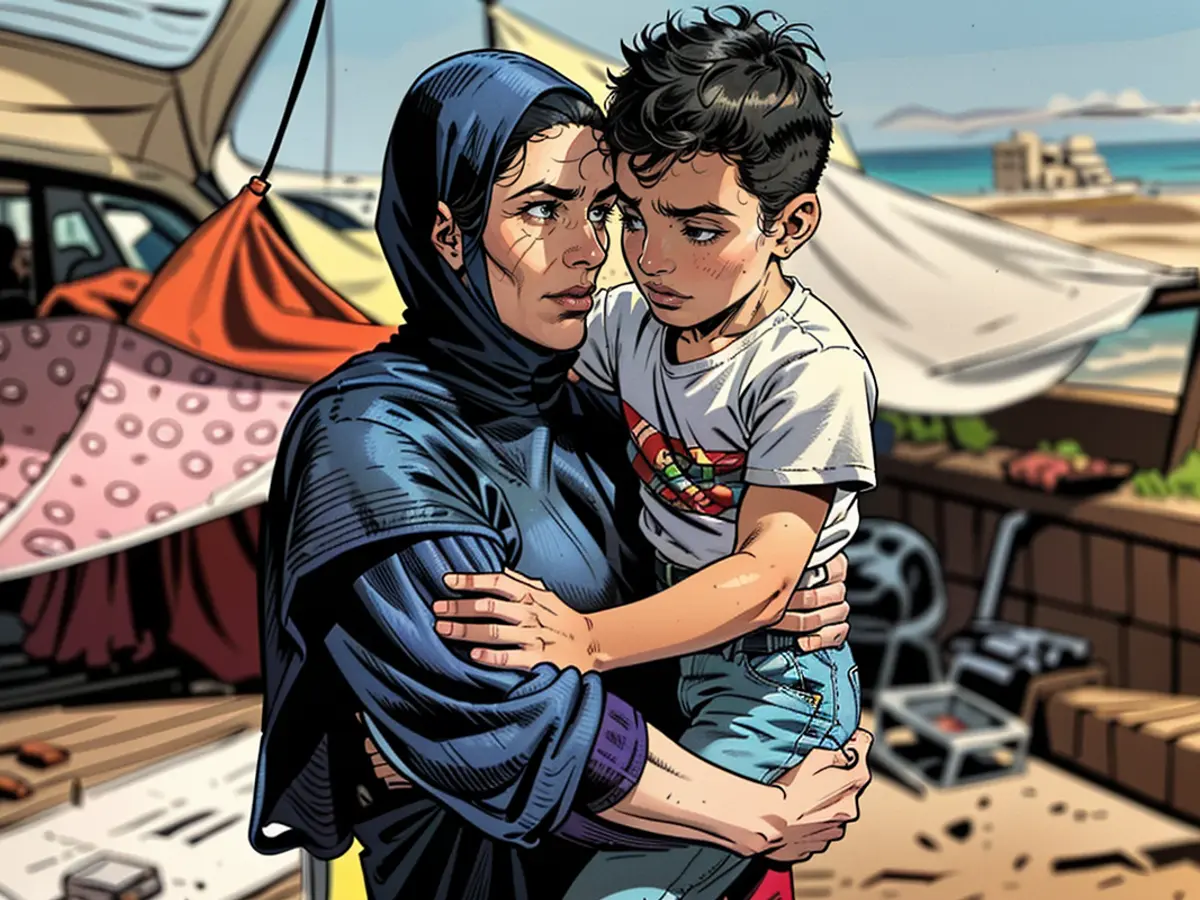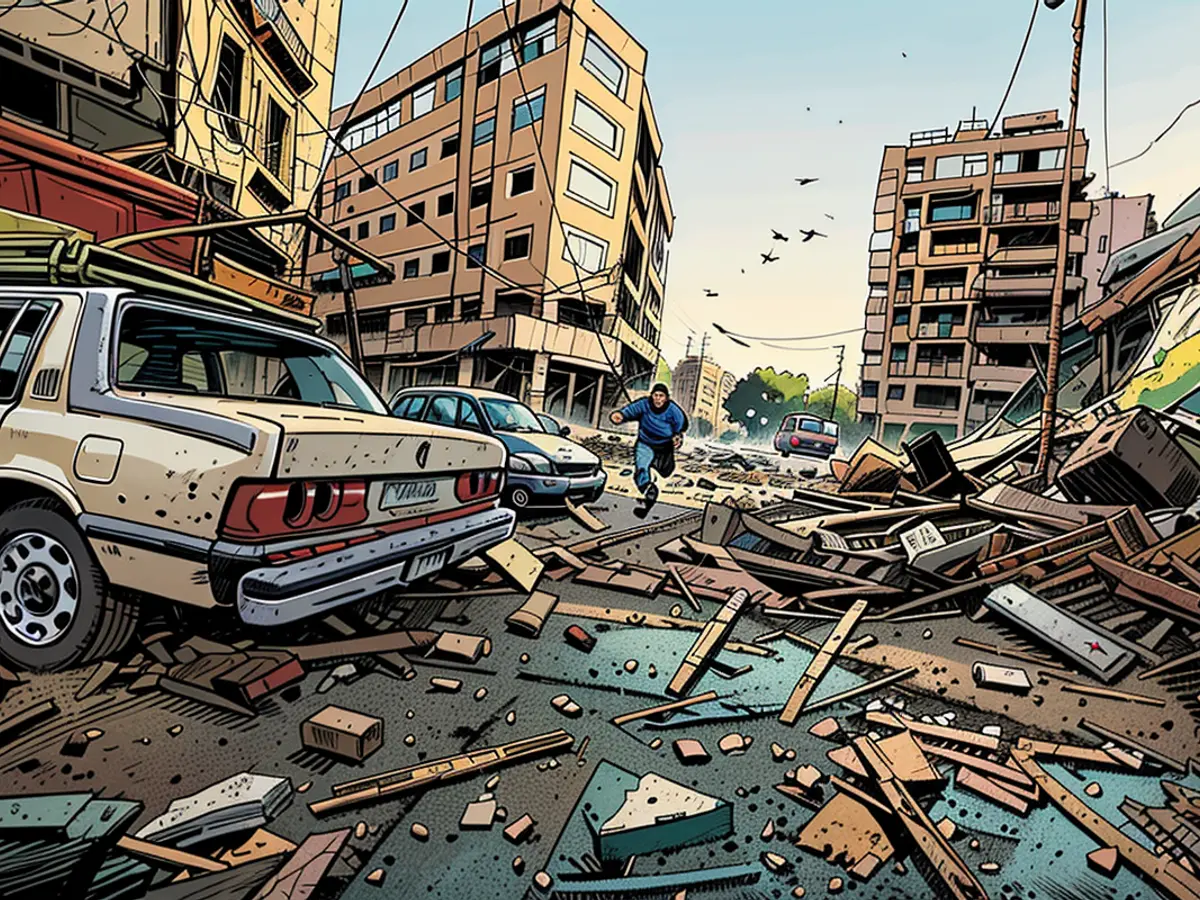Israel's aerial assault on Lebanon marked the most severe airborne offensive outside Gaza in the past two decades.
The recent bombardment, which Israel asserts is aimed at Hezbollah bases within the nation, denotes the globe's "most vigorous aerial initiative" outside of Gaza in the previous two decades, as per the assessment of the conflict observation group Airwars.
Israel's attacks are occurring at a scale and intensity that "not even Israel's own allies would have carried out in the last 20 years," Emily Tripp, executive director of the UK-based institution, told CNN. She highlights the United States-led war on ISIS in 2017, during which 500 ordnances were deployed in a single day at the peak of the Raqqa battle – the ISIS de facto capital.
Over a span of two days, on September 24 and September 25, the Israeli military declared they utilized 2,000 ordnances and executed 3,000 attacks.
For the majority of America's 20-year engagement in Afghanistan, the US conducted less than 3,000 strikes yearly, besides the first year of the invasion, where approximately 6,500 strikes were carried out – as per Airwars data analyzed by CNN.
Tripp labeled both the magnitude and scope of Israel's strikes on Lebanon as "unusual," although she added that Israel's air campaign on Gaza in the past year – where nearly 60% of buildings were estimated to have been damaged by Israeli strikes – has made such mass attacks commonplace.
Israel claims it takes precautions to lessen civilian harm, such as making phone calls and sending text messages to inhabitants in buildings slated for attack. Human rights organizations like Amnesty International argue that such warnings do not absolve Israel of its international humanitarian law responsibilities to reduce civilian harm.
CNN has earlier reported on Israel's destructive use of 2,000-pound bombs, which experts attribute to the high death toll in Gaza and appear to have been deployed in the airstrikes that eliminated Hezbollah’s leader, Hassan Nasrallah, in Lebanon. The sizeable ordnances have impacted civilian infrastructure in Gaza and now Lebanon.
CNN teams in Beirut this week discovered that numerous Israeli strikes happened without prior warning, and Israel issues evacuation orders by text in the middle of the night when most people are sleeping.
As a result, the death toll in Lebanon keeps rising, with a fifth of its population now displaced.
Since October 8, Hezbollah and Israel have consistently exchanged fire, with the day after the Hamas-led attack on Israel marking the beginning. The incident resulted in over 1,200 people being killed and 250 taken captive. Hezbollah, a militant group backed by Iran, has vowed to continue striking Israel until a truce in Gaza – where the Israeli bombardment has killed more than 41,000 people in the past year, according to the ministry of health in the territory – is achieved.
The majority of the exchanges between Israel and Hezbollah since the commencement of the war have come from Israeli strikes, drones, shelling, and missiles on Lebanese territory, as per data from ACLED (Armed Conflict Location and Event Data), an organization that collects data on violent conflict.
Israel has launched approximately 9,000 attacks into Lebanon since October 8; Hezbollah launched 1,500 attacks during the same period, according to the ACLED data.
On September 25, Israel further amplified its air campaign with a barrage of intense strikes across extensive areas of Lebanon, marking the "deadliest day" for Lebanon since the 2006 Israel-Hezbollah war and a turning point in the current conflict.
While the majority of Israel's airstrikes over the past year have focused on southern Lebanon, Israel has also escalated its attacks on Lebanon's capital in recent weeks, with multiple airstrikes in southern Beirut decimating residential buildings and heavily populated civilian areas.
A series of rapid-fire strikes has killed at least seven high-ranking Hezbollah commanders and officials in recent weeks, inflicting the most significant damage to the group since its inception in the early 1980s.
These strikes have primarily taken place in the city's southern Dahiyeh neighborhood, a densely packed residential area and Hezbollah stronghold. It was there that Israel eliminated the militant group's leader in an air raid on his underground bunker on September 27.
However, as Israel's campaign to disarm Hezbollah continues, civilians bear the brunt of the casualties, including 127 children who have been killed in less than three weeks, according to the health ministry.
On September 23 alone, at least 558 people – including 50 children and 94 women – were killed.
Women and girls are particularly affected by the displacement caused by the airstrikes, according to Lebanon's country director at the humanitarian agency CARE International. Nearly half of the people in Lebanon's emergency shelters for displaced individuals are children, and the facilities are operating beyond capacity, Michael Adams said.
Now, Israel is targeting central Beirut – not its suburbs – with airstrikes for the first time in nearly 20 years.
Simultaneously, a quarter of Lebanese territory is under Israeli military evacuation orders as Israel intensifies its ground operation in the south, with its inhabitants forced more than 30 miles north of their homes.
More than 100 villages in southern Lebanon have now been issued evacuation notices, stoking fears of an expanded ground invasion.
Residents have no idea when they might be able to return – or what they might find remaining.
CNN’s Allegra Goodwin, Eyad Kourdi, and Soph Warnes contributed to this report.
The recent escalation of attacks in the Middle East, specifically in Lebanon, has led to a significant displacement of Lebanon's population and a rising death toll. This ongoing conflict between Israel and Hezbollah has seen Israel launch over 9,000 attacks into Lebanon since October 8, making it the "most active" aerial campaign against the Middle East outside of its operations in Gaza in the past two decades.








